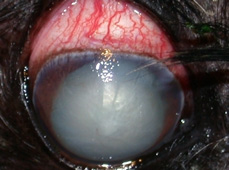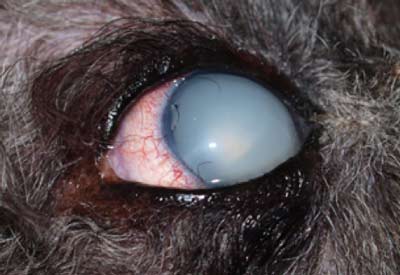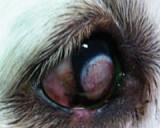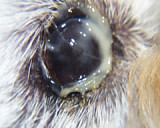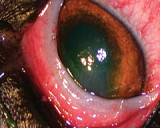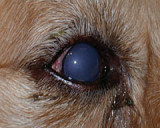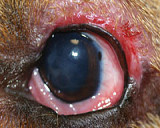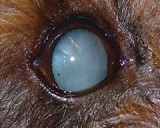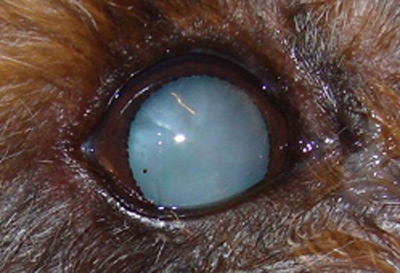 Cataract surgery is a very involved procedure, and there is a lot of preparation prior to and after surgery. The following options will inform you more about cataracts and the procedure, however if you have any further questions prior to making a possible appointment please do not hestitate to call the clinic.
Cataract surgery is a very involved procedure, and there is a lot of preparation prior to and after surgery. The following options will inform you more about cataracts and the procedure, however if you have any further questions prior to making a possible appointment please do not hestitate to call the clinic.
What Is A Cataract?
A cataract is an opacity of the lens. The lens is normally clear and transparent and when a cataract forms the lens itself goes cloudy.
A cataract is not a film or coating of the eye, but it is the lens protein, inside the lens capsule that becomes becomes cloudy. A cataract can affect just a small part of or the entire lens. Small cataracts may not have any affect on vision. If the cataract involves the entire lens in both eyes then vision will be absent.
In the more advanced cataracts, you may notice that the pupil, which normally appears black, has undergone a colour change and becomes bluish or white. As the pupil opens and closes, this cloudiness may appear larger or smaller. The cataract is simply being covered and uncovered by the iris.
Cause
What Can Cause A Cataract?
There are many possible causes e.g. diabetes, inherited causes in purebred dogs, and PRA (progressive retinal atrophy), but often we do not find a specific cause. Breeds seen at Animal Eye Care with inherited cataracts include Cocker Spaniels, Poodles, Australian Cattle Dogs, Maltese, Boston Terriers, and Golden Retrievers. It is difficult (except in some diabetics) to look at a cataract and determine the cause.
Why Check The Retina
Why Do We Check The Retina?
The retina (the nerve tissue at the back of the eye) must be healthy for cataract surgery to restore vision. Many purebred dogs such as Labradors, Australian Cattle Dogs, Australian and Silky Terriers, Poodles, and Cocker Spaniels can have PRA: progressive retinal atrophy. This is the cause of the poor vision and the cataracts. PRA in the early stages can cause poor night vision, followed by poor day vision and eventually cataracts. In many cases the early signs of PRA are overlooked, even by the most diligent of owners, and it is assumed that the cataracts are the cause of the vision loss. In these cases the dog is blind because of the PRA, so cataract surgery will not restore vision.
Electroretinography
If we cannot see the retina because the cataract is too cloudy, an ERG (electroretinogram) will be performed. This is an electrical test of the retina performed under light anaesthesia. Using a computer we measure the electrical response to bright lights being flashed into the eye. If the retina is healthy the ERG will show a normal wave pattern; if the retina is diseased with PRA the ERG is flat. If the ERG shows that the retina is not working, then cataract surgery will not help to improve vision The ERG will not show early retinal detachments. As part of the general workup before surgery we may perform ocular ultrasonography. This is usually done at the same time as the ERG. The ultrasound is used to image the inside of the eye; in these cases we are checking to make sure that the eye is healthy enough for surgery. In particular we are looking for advanced degenerations.
Inflammation
What Is Cataract / Lens Induced Uveitis (Inflammation)?
As cataracts form, the lens protein inside the eye changes. This change may allow the lens protein to leak into the inside of the eye. This causes inflammation inside the eye, and this must be treated. Diabetic dogs seem to be especially prone to this inflammation. Lens induced uveitis can cause painful outcomes such as glaucoma and/or lens luxation. Pre-operative lens induced uveitis can lower the success rate of cataract surgery. Lens induced uveitis can be controlled in most cases with longterm drops (Pred Forte or Maxidex) and in some cases tablets. Surgery is helpful in most cases to help control the lens induced uveitis as the protein that is causing the reaction is removed. The cataracts that develop because of the PRA will often cause this lens-induced uveitis. Watch for signs of redness on the whites of the eye. If treated early, painful outcomes such as glaucoma and lens luxation can be avoided.
Treatment
What Is The Treatment For Cataracts?
Surgery is the only effective method to remove the cloudy lens from the eye. There are no known preventative treatments for cataracts. From time to time various drops, lotions, pills, and special diets have been suggested to help with cataracts. These have not been proven to help dissolve or reduce a cataract.![]() Cataract Surgery Information1.11 MB
Cataract Surgery Information1.11 MB



